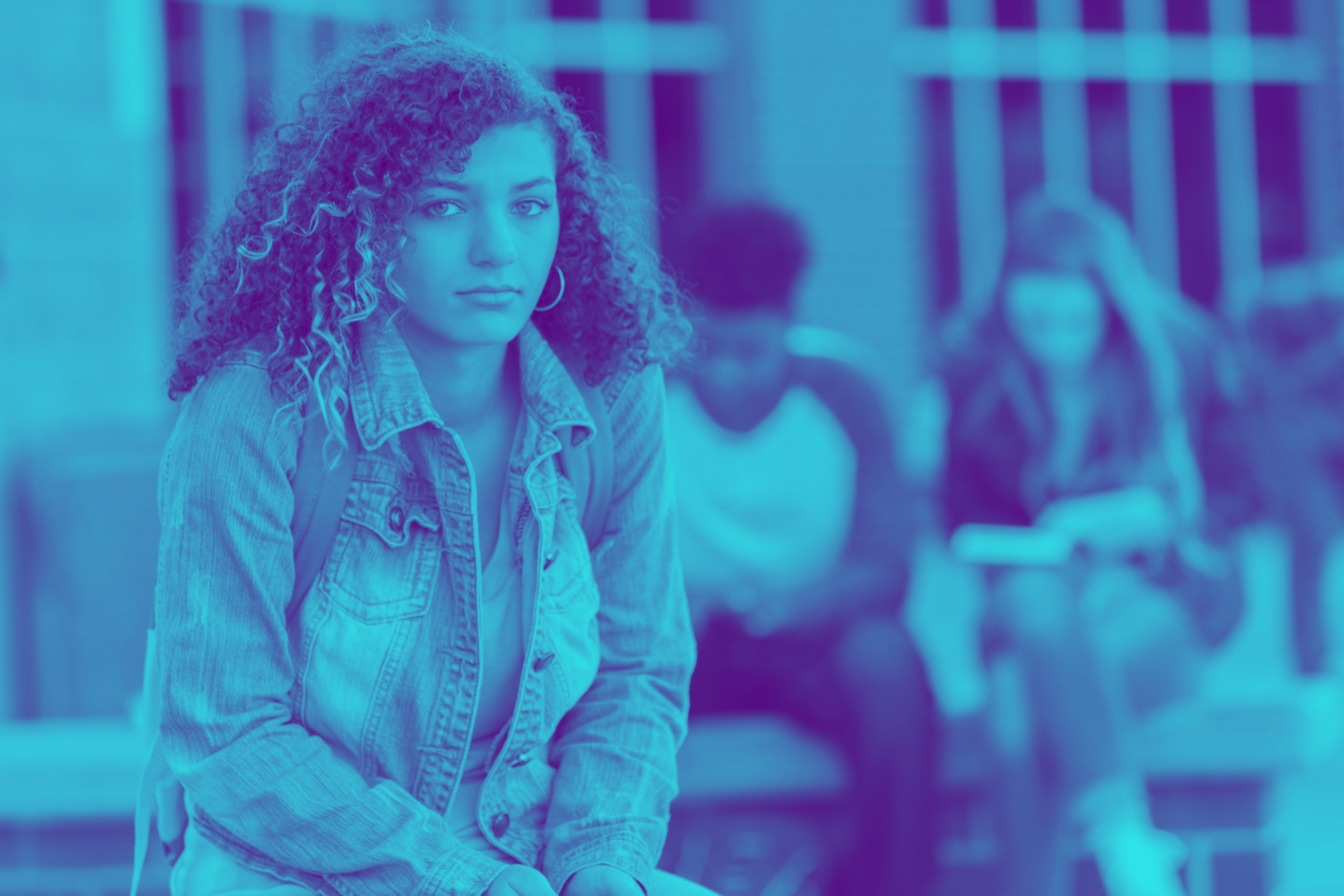Issues
Who is at Risk?
While every young person is at risk for trafficking, this is a highly gendered crime. 97% of reported victims are women and girls. 75% of these are under the age of 25. Additionally, 92% of victims knew the person who trafficked them either as a friend, boyfriend/girlfriend, or family member. Vulnerability to trafficking can include youth of any race or gender. However, Indigenous, Black, racialized, LGBTQ+ and youth with histories of abuse, poverty, or neglect are at greater risk.
Canadian Statistics
Approximately 1 in 5 service providers that victims rely on to escape trafficking and heal were no longer able to offer their services due to Covid-19. Our team works with research experts to ensure our training and care to meet the current demands.
Minor Aged Statistics
It can take up to 18 months for family and friends to identify a young person is a victim of human trafficking and being sexually exploited. 68% of victim survivors are 24 years of age and under. The median age of exploitation is 12 years of age
Human Trafficking Types
List of Services
-
Labour Trafficking:List Item 2
- Labour Trafficking for forced labour Victims of this widespread form of trafficking come primarily from developing countries. They are recruited and trafficked using deception and coercion and find themselves held in conditions of slavery in a variety of jobs. Victims can be engaged in agricultural, mining, fisheries or construction work, along with domestic servitude and other labour-intensive jobs.
- Use of violence, threats, lies, debt bondage, or other forms of coercion to force people to work against their will in many different industries. This could include students and their families.
-
Forced/Coerced Crime Trafficking
- This form of trafficking allows criminal networks to reap the profits of a variety of illicit activities without the risk. Victims are forced to carry out a range of illegal activities, which in turn generate income. These can include theft, fraud, drug cultivation, selling counterfeit goods, or forced begging. Victims often have quotas and can face severe punishment if they do not perform adequately.
-
Forced Marriage
- Organ/Surrogate Trafficking In many countries, waiting lists for transplants are very long, and criminals have seized this opportunity to exploit the desperation of patients and potential donors. The health of victims, even their lives, is at risk as operations may be carried out in clandestine conditions with no medical follow-up. An ageing population and increased incidence of diabetes in many developed countries is likely to increase the requirement for organ transplants and make this crime even more lucrative
-
Sex Trafficking:List Item 1
- Sex Trafficking for sexual exploitation the recruitment, harboring, transportation, provision, obtaining, patronizing, or soliciting of a person for the purpose of a commercial sex act. It involves the use of force, fraud, or coercion This prevalent form of trafficking affects every region in the world, either as a source, transit or destination country (Canada). Women and children from developing countries, and from vulnerable parts of society in developed countries, are lured by promises of decent employment into leaving their homes and travelling to what they consider will be a better life. Victims are often provided with false travel documents and an organized network is used to transport them to the destination country, where they find themselves forced into substandard labour conditions and even sexual exploitation and held in inhumane conditions and constant terror. Domestic sex trafficking in Canadas sex industry is more prevalent nationally than migrant, immigrant trafficking.
- Sex trafficking is the crime of using force, fraud or coercion to induce another individual to sell sex.
- Sexting: Sexting is common place among children with 14.8%sending and 27.4% receiving sexts with growing numbers
- Sextortion: When someone threatens to distribute your private and sensitive material if you don’t provide them images of a sexual nature, sexual favours, or money. The perpetrator may also threaten to harm your friends or relatives by using information they have obtained from your electronic device sunless you comply with their demands.
-
Cyber Sex Trafficking:List Item 3
- Internet provides traffickers with a layer of protection. Perpetrators remain anonymous—use pseudonyms, fake-photos, private networks (VPN). Additionally, increasing popularity of cryptocurrencies make monetary exchanges harder to trace back to personal bank account
-
Human Trafficking:
- The involvement of recruitment, and human control or influence of movements of a person to exploit themselves.
-
Sexting:
- The involvement of sending or getting sexually explicit content images through messages or video.
Trends
In Human Trafficking Victim/Survivors experiences may cause them to exhibit some or all of these signs. However, someone can be a victim and not exhibit any of these signs and that is why knowing about behaviours and circumstances is vital. It is impossible to keep up with current trends without engaging in front-line support. Our trend knowledge is as current as yesterday.
Signs & Behaviour
Lifestyle
- New & expensive gifts
- Change in attendance, grade and behaviour at school or drops out of school
- Disconnects from family and friends and starts being elusive about whereabouts and new “friends”
- Change in their daily routine, awake throughout the night and sleeping during the day
- Evidence of being controlled
Appearance
- Dressed inappropriately for the weather
- Signs of physical trauma (unexplained bruises, cigarette burns etc.)
- Has a name or a symbol tattooed or branded onto their bodies (and are unwilling to explain the marking)
- No longer has possession of their identification (their ID is being held by someone else)
- Has large amounts of cash, pre-paid credit cards, hotel keys/receipts
- Carries multiple cell phones
- Has notebooks, slips of paper with nicknames, phone numbers, prices and dollar amounts
- Is in possession of sexual paraphernalia such as bulk condoms and lubricant
- Has provocative photos of themselves on their phone
- Changes in online social media presence - new profiles/accounts/online friends, not allowing parents to access accounts
- Has provocative pictures on their social media and dresses more provocatively regularly
- Has applications on their phone that disguise their phone number
- Has recurring medical complications involving sexually transmitted diseases
Demeanor
- Hostile or Angry
- Anxious & nervous
- Shy or submissive
- Have been reported missing by their family
- Confused about whereabouts
- Rejects help when it has been offered more frequently and may not know their surroundings well
- Dissociates and has a difficult time remembering conversations
- Seems coached/frightened/nervous/paranoid hostile when engaging with persons in authority or the police
- Will avoid eye contact
Language
- Speaks openly about sex
- John, trick, “the life or game”
- Lies about identity - name, age etc. on the profile
- When in contact with persons in authority avoids answering questions or lets other speak for them
- Uses slang language that is often used in the sex industry (daddy/pimp/bottom, etc.)
- Not allowed to speak for themselves
Feelings & Experiences
Many victims don’t realize that they are being trafficked. Human trafficking is a complex issue that impacts both physically and psychologically. It is common for those who have been trafficked to have a hard time identifying as being exploited due to the manipulation used by the trafficker.
If you are affected by Human Trafficking you may feel:
- Angry
- Guilty
- Shame
- Self blame
- Afraid, cautious or confused
- Worthless or alone
- Sad or depressed
- Anxious
- Like you don’t have control
- Like you can’t trust anyone
- Conflicted feelings to your trafficker
These are all common reactions to exploitation and abuse, but if you are feeling something else, that is okay, too.
We know that the psychological impacts of exploitation, such as anxiety, depression, post-traumatic stress, combined with feelings of self-blame and guilt, can have long lasting effects on individuals.
It is not uncommon for individuals to also experience the following:
- Post-traumatic Stress Abuse
- Drug and Alcohol Abuse
- Thoughts of Suicide
- Self Harming Behaviours
- Pregnancy and Sexually Transmitted Infections (STIS)
- Homelessness
- Mental Health Impact Factors
Laws and Legislation
Human Trafficking and the Law
Criminal Code of Canada
Since 2005, human trafficking has been a crime under Canada’s Criminal Code.
Human Trafficking (Section 279.01) of the Criminal is defined as follows:
“Every person who recruits, transports, transfers, receives, holds, conceals or harbours a person, or exercises control, direction or influence over the movements of a person, for the purpose of exploiting them or facilitating their exploitation is guilty of an indictable offence.”
For a charge under this offence, the evidence must indicate that the suspect has: Recruited transported, transferred, received, held, concealed, or harboured the victim, or exercised control, direction or influence over the movements of the victim; and done for the purpose of exploiting the victim or facilitating their exploitation.
Human trafficking includes three elements:
- Act: recruiting, transportation, transferring, harbouring, or receiving, people
- Means: threat or use of force, coercion, abduction, fraud, deception, or abuse of power, or paying someone in control of victim
- Purpose: exploitation
There are three other main offences to address human trafficking in Canada’s criminal law:
- section 279.011 (Trafficking of a person under the age of eighteen years),
- section 279.02 (Knowingly getting money or other benefits from human trafficking), and
- section 279.03 (Taking or destroying travel or personal identification documents of a person being trafficked).
The Criminal Code defines “exploitation” as follows:
Exploitation (section 279.04): Causing someone to provide, or offer to provide, labour or a service by engaging in conduct that could reasonably be expected to cause that person to believe that their safety, or the safety of a person they know, would be threatened if they failed to do so.
Providing exploitation in regards to Human Trafficking requires proof that shows that a reasonable person, standing in the survivor’s shows, would be afraid - taking into account all of the survivor’s unique circumstances (e.g., age, gender, national, ethnic origin, socioeconomic conditions, etc.). It does not imply that the survivor must state that they feared for their own or someone else’s safety.
An important point to remember is that a victim’s or consent is NOT a defense to a human trafficking charge. In Canada, no one has the legal right to consent to being exploited.
What is NOT Human Trafficking?
- Human smuggling that involves moving someone across a border
- Prostitution in sex industry by individuals 18 years of age and older






